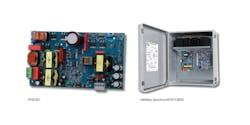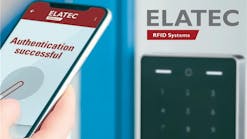This year’s State of the Industry (SOI) Report (starting on page 16) covers a lot of ground, delving into many areas that affect a locksmith’s business, from product purchasing and inventory, to staying on top of the latest trends and technologies, to navigating business challenges while looking for new opportunities to grow and expand as a company.
For this state of the industry roundtable discussion, Locksmith Ledger caught up with three busy locksmiths from different parts of the United States, to look at what is driving their businesses to new heights, and what is keeping them up at nights.
Top Verticals and Trends
Looking at top growth verticals, locksmiths seem to have their hands on locks across most verticals, with areas such as multifamily housing, schools and government, to name just a few, showing strong growth recently.
“The surprising one is multifamily housing, which is coming back and that's one that locksmiths have been kind of cut out from for a long time,” says Glenn Younger, owner, Grah Safe and Lock, a full-service security company based in San Diego, Calif. “The change in that, and the reason locksmiths have been cut out for a long time was it was just cheaper to replace locks and throw the old ones away. Now everybody's going to smart locks and doing that, and it's also on the horizon for a lot of folks. In the last couple of years it's taken off and we are starting to see big projects, so there's funding approved for like $100,000 and $500,000 projects.”
He adds, “Whether it is brand new construction or remodeling or old buildings, all three of them are finally kind of starting to come together. We have more projects in our pipeline in terms of raw dollars than we've ever had in my life.”
Another area where Younger is seeing increased opportunity is working for utilities, noting that battery storage, which includes securing these areas, is a major challenge.
“They've got to store that energy, so the big expense that is happening all over the country is the building of these battery yards,” he explains. “There are 350 electrical substations where they take high voltage, and they convert it into stuff that we can put into our house or a building. So, they need to have all of those battery yards, where they're storing it and then getting solar, and there's a real security issue because once a fire starts, it gets big fast, and it is hard to put out. With all these battery yards, they need to be super secure, but they also need to be able to get into them to put out the fire. And so those two things are totally different, and it creates both a challenge and an opportunity for locksmiths.”
Tyler J. Thomas, president of Security Engineering Consultants in Atlanta, Ga., says his company continues to see a demand for master keying, which jumped to No. 1 in our SOI Report (see page 17) of services locksmiths are offering today.
“It's busier than ever for us,” says Thomas.” We specialize in master key systems and high security and not a lot of people are doing it anymore. As locksmiths retire or sell, there's just fewer people to do it. I've gotten three big buildings in Atlanta this past year because they just couldn't get service elsewhere, so it's a blessing.”
Thomas says his company also branched out and is offering more high security products than before. “In addition to Medeco, now we're offering ASSA ABLOY. We’re doing Sargent … we've expanded our portfolio a little bit to meet up with the demand. We continue to grow and expand our offerings, or our flavors of high security in master keying.”
Looking at the specific growth verticals, Thomas is seeing an uptick in work with the government and in Class A, or high-end buildings, which have “rebounded tremendously over the last six months,” he says. “Class A was always kind of our breadwinner and with a pandemic it slowed down and we were kind of breaking even with it. But over the last six months, with work from home kind of going away, we're doing a ton of Class A again. Government [work] is steady and has grown a little bit because one of the agencies we do work for has expanded quite a bit and they're getting new locations around the state.”
Electronic Access Control
John Nolan, owner of Reliant Security, who recently moved his business from Colorado to the Kansas City, Mo.-area, continues to see an increase in demand for electronic access control solutions and products.
“I see a huge uptick in electronic access, so people moving over from keys to cards or phone access or some type of digital interface instead of just the mechanical lock,” he explains. “Overall, though, I'd say everyone is starting to go into electronic access and even automation type stuff, although I am seeing a particular uptick in interest from government, from schools, and I just completed a project with a church.”
He says people want remote access and support, so having products that match those major criteria has been great for his business. “And then, of course, we must look at digital security of how that data is being accessed and how that data is being stored. The last thing you want to do is buy some cheap product that is made overseas somewhere, only to find out there are major security flaws, and the data is being accessed or compromised somehow. So, when we're looking at online and remote access with this stuff, we're looking for devices and software that have a lot of security built into them.”
Nolan’s company offers everything from high security locks to alarm systems to cameras, all of which are getting higher tech and able to communicate with other systems within a building to provide better auditing and security capabilities.
“Cameras have become smarter and they're able to send out alerts, so instead of a camera system being passive and just recording what happened, now they have really evolved especially with the growth in AI,” says Nolan. “The cameras are so smart now they can not only see things that are happening on site, but they are now able to alert people, as well as interact with access control and other systems within a building. So, there's a human element built in with that AI element.”
Younger is seeing electronic access control within products that have typically been mechanical, such as padlocks and cabinet locks, for example, which can work in tune with electronic key control and management. “Padlocks and cabinet and furniture locks are now being tied into the rest of the building’s system to provide better tracking and auditing,” he notes.
Locks that can provide a visual indicator or status also continue to a be a big trend not only in schools but also in retail and other settings, says Younger, noting, “The indicator locks, whether mechanical or electronic, are being specified in a lot more areas, and they will continue to be used in a lot more areas.”
Purchasing Trends
While this year’s SOI Report shows that locksmiths continue to look to outside sources beyond national and local distributors for products, Nolan says it is important to find the right company to work with.
“I've partnered with IML for most of my needs and what I think is important is building that relationship,” he explains. “Since I buy so much from them, or exclusively purchase through them, they're able to get certain things that other vendors that I've looked at in the past can't get ahold of, or don't have the stock levels for. I chose them because they promised certain things like keeping the items I need stocked and ready, and so far, they've kept up on that. So, it’s finding that supplier that's going to work best for you.”
With all the consolidation that is happening throughout the industry, Younger is concerned it is affecting how locksmiths get their products.
“Some of the consolidation that happened didn't lead to better outcomes,” he says. “And some distributor companies we used to work with quite a bit, we just can't work with anymore just because of our lack of faith and trust in their ability to take the order and get it to us when they say they're going to get it to us.”
Younger now works with a couple of distributors that he has developed good relationships with over time. “We've got a couple of companies that have either a big division that's really focused on locksmiths or all they do is focus on locksmiths,” he says. “Anixter/Wesco, they have a lock division that is focused on selling to folks like us. And IML in the West does a great job, too. So, we feel like we've got two great suppliers in that regard. And then there's other good ones too, like Top Notch and SECLOCK, for example, so we could shift to the other ones and do just as well.”
Thomas has been working closely with his distributor and manufacturer partners to expand his offerings and get the products he needs when he needs them. “It used to be four to six weeks, and now it's two to four weeks for pretty much everything, so the factory lead times in my experience have gotten better. Distributors, you know, it just depends on what they stock or which brands they represent, but they're pretty good as well.”
He continues, “Expanding our offerings as far as manufacturers and brands has certainly done well for us. We’ve broken even a lot of times on that first initial new product offering, but anything after the fact we are making money because we’re already set up to do it.”
Challenges and Opportunities
“The biggest challenge for any business – and I hear this from other business owners, too – is finding good, dedicated employees,” says Nolan. “Unfortunately, most of the younger generation that I would love to target just doesn't have the work ethic that they need to hold a job. And then when you do find somebody with a good, strong work ethic, everybody wants them.”
Nolan points out that he has struggled over the past two years, for example, to find a decent technician. “It’s tough when you're in a smaller town … you know all the people that you're choosing from. I've tried the friend route, I've tried the family route, I've hired somebody blindly that I didn't know and looked promising – but those three options didn't work out very well for one reason or another.”
In addition to reaching out to colleges and universities, for example, Nolan suggests taking on someone who is eager to learn a trade that could lead to a career as a paid apprentice, noting that he is excited to see what the new city he is working in will yield in terms of qualified professionals who are looking for solid work and to break into a stable and growing industry.
While Nolan is struggling to find good people, Younger is struggling to train and keep the ones he has. “I can get people; I just can't train them fast enough,” he asserts. “But that is on us, and we are getting better at that part. We just have to become more able to, and adept at using the resources that we have, such as manufacturers’ training and online training options.”
On the product side, Thomas says it has been interesting, albeit challenging, to keep up with the changing aesthetics of buildings and public spaces.
“People's tastes change,” he says. “In the ’80s, everybody wanted bright brass and in the ’90s and early 2000s, everybody wanted satin chrome. Now they want flat black. So, you're selling a bunch of satin chrome and then suddenly everybody wants flat black – well, you don't have that in stock, so you’ve got to change and expand your inventory because not only are you servicing what they have but now they want to add something new to it.
“On top of that, there's new hardware coming out all the time; it's not just lever sets and mortise locks – now you've got all sorts of different locks for glass doors. And everybody wants to go with open-office floor plans with conference rooms galore, and a lot of this is being specified in new construction.”
Despite these challenges, Younger is excited about the next generation of locksmiths, from the way the way they are pushing the industry to adopt new technology, to the way they are building a community focused on helping each other manage and run their businesses better.
“There's going to be a big silver tsunami, where lots of people with gray hair like me are retiring, but with this turnover there is also opportunity,” he says. “And the next generation of folks – and I'm thinking of the sort of locksmith influencers like Chad Lingafelt and Wayne Winton – are trying to share the business side of their knowledge and that’s what I'm excited about.
“There really are some smart people in this next generation, and there seems to be the beginning of what I am seeing as another generation saying, ‘How do we run this business better?’ Part of it’s technical, but part of it is just making good business decisions.”
Paul Ragusa | Senior Editor
Paul Ragusa is senior editor for Locksmith Ledger. He has worked as an editor in the security industry for nearly 10 years. He can be reached at [email protected].








